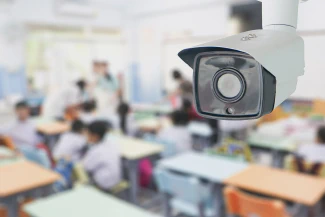Keeping Our Schools Safe While Providing Inclusive School Safety Solutions
Amidst all the shouting about protecting our students at school, are we ready to provide inclusive school safety solutions? This past year has been filled with tragedy in our country’s classrooms as we reflect on the school violence that took place and the lives that were lost. The days, weeks and months following each tragic event often included strong words and swift action by federal and local officials. Proposed solutions have included such things as; increasing the presence of school police and security, arming teachers and staff, increasing surveillance and also implementing some tougher disciplinary practices.
But as the adults argue over the best ways to keep students safe, the students themselves are saying that the solution is not to increase punitive discipline practices against them. Should we listen?
Earlier this year, the Government Accountability Office analyzed national civil rights data from the Department of Education and found that black students, boys, and students with disabilities were disproportionately disciplined (suspensions / expulsions) in K-12 public schools. The disparities persisted regardless of the type of disciplinary action, level of school poverty, or type of public school attended.
Some believe that policymakers trend toward implementing knee-jerk, reactionary rules that lean in the direction of harsher exclusionary discipline practices… and that this justifies a ‘zero-tolerance’ atmosphere in our schools. This tendency can further alienate and isolate the most at-risk students, allowing them to spiral further into a dangerous fate for themselves and potentially others.
But why would a ‘zero-tolerance’ atmosphere be a bad thing when fighting against the school violence epidemic?
It turns out that Adverse Childhood Experiences (ACEs) play a major role in school disciplinary practices and provide insight as to how we can better approach ‘bad behavior’. The ACE Study, conducted in part by the Centers for Disease Control and Prevention since 1995, shows that childhood trauma is associated with sustained health and social problems across a person’s lifespan. These problems can initially manifest as social, emotional or cognitive impairment and eventually lead to health-risk behaviors (substance abuse, self-harm). These behaviors, when met with a harsh ‘zero-tolerance’ policy in school, can easily be misunderstood… and subsequent attempts to ‘punish’ the individual will only compound the problem.
So what can we do about it? Should we begin to take down all of our shiny new cameras and send home the extra security personnel we hired? Of course not. If anything, we should begin to think about the problem at its core. As difficult as it may be to admit; the cameras, security officers, door jams and other reactionary solutions are all in place to treat the symptom, not the cause. Some of these solutions may be effective, but at the forefront of the school safety movement, we should attempt to build learning environments in our schools that are characterized by patience, understanding and empathy. By providing inclusive school safety solutions, we allow those who need it most to have readily available counseling and mental health resources while also proactively engaging at-risk students in a positive manner so they can grow into capable, confident and skilled young adults.
To learn more about these inclusive school safety solutions and how they can be implemented, see the articles below:
CPS Continues Reduction of Suspensions and Expulsions to Keep Students Connected to Schools
School Connectedness: Strategies For Increasing Protective Factors Among Youth
Learn about how simple tip reporting technology can help reduce bullying in K-12 environments.



